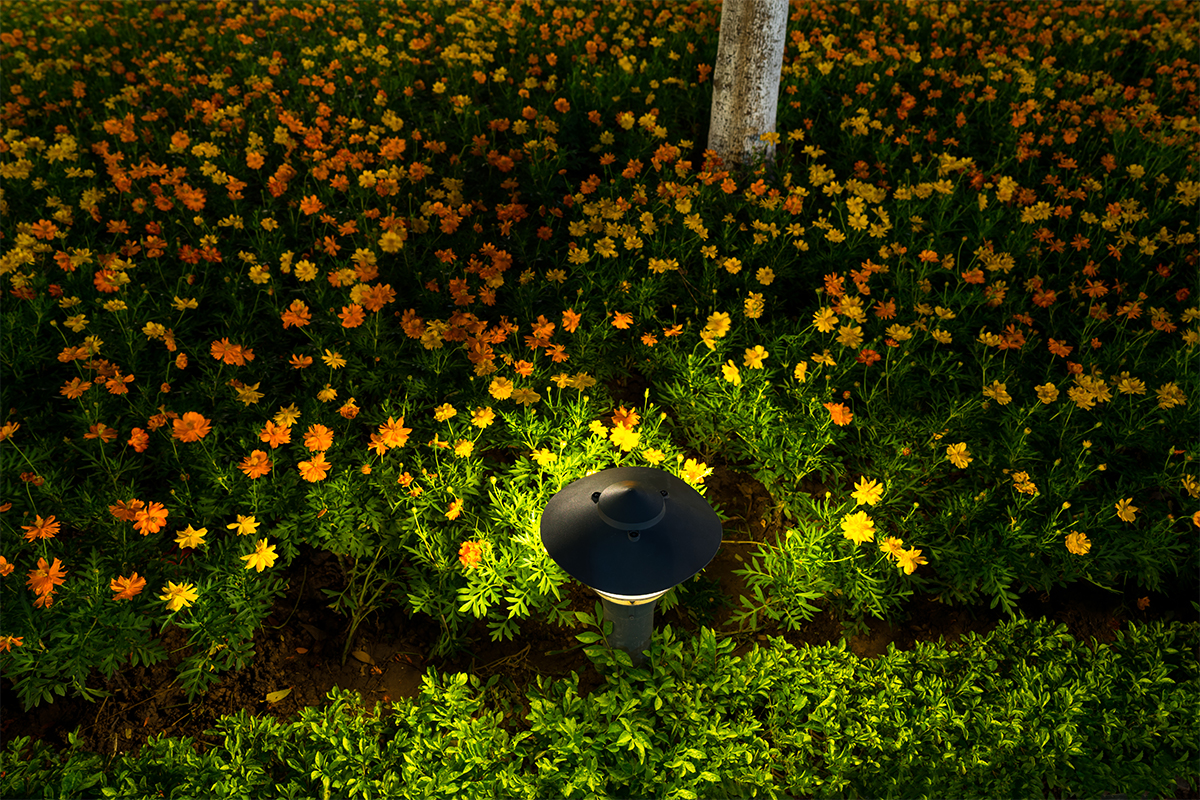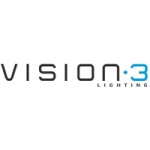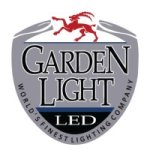Table of Contents Hide
- 1 From darkness to enchantment
- 2 A specialized application of outdoor lighting
- 3 Functional aspects of landscape lighting
- 4 Aesthetic enhancement
- 5 The artful convergence of landscape and architectural lighting
- 6 The transformative effect of landscape lighting on the atmosphere
- 7 The science and art of landscape lighting
-
8
A tapestry of light: combining techniques for multifaceted landscape lighting effects
- 8.1 Uplighting
- 8.2 Downlighting
- 8.3 Moonlighting
- 8.4 Silhouetting
- 8.5 Cross-lighting
- 8.6 Spotlighting
- 8.7 Shadowing
- 8.8 Spread lighting
- 8.9 Wall washing
- 8.10 Wall grazing
- 8.11 Path lighting
- 8.12 Deck lighting
- 8.13 Step lighting
-
9
Types of landscape lights
- 9.1 Path lights
- 9.2 Landscape spotlights
- 9.3 Landscape floodlights
- 9.4 Well lights
- 9.5 Underwater landscape lights
- 9.6 Illuminated bollard fixtures
- 9.7 Deck lights
- 9.8 Step lights
- 10 The multifaceted design and engineering of landscape LED lights
- 11 Lighting control
- 12 Smart landscape lighting
- 13 Power supply

From darkness to enchantment
Landscape lighting is a design-oriented approach to outdoor illumination that focuses on enhancing the visual appeal and ambiance of exterior spaces. This concept is inherently multifaceted, encompassing a diverse range of considerations and applications that go beyond mere illumination. The multifaceted nature of landscape lighting involves a thoughtful integration of design, technology, safety, environmental consciousness, and functionality to create a well-balanced and visually appealing outdoor lighting scheme. Landscape lighting aims to create a harmonious balance between functionality and artistic expression by showcasing the beauty of natural and architectural features, thereby transforming outdoor spaces into visually engaging and inviting environments, especially during the evening or nighttime hours.A specialized application of outdoor lighting
Landscape lighting is a specific and focused use of lighting techniques designed for outdoor spaces. It is a deliberate and artistic approach to illuminating gardens, pathways, architectural elements, and natural features during the nighttime. The application of lighting in outdoor spaces is specifically adapted to the unique characteristics and elements found in landscapes. Landscape lighting aims to create a harmonious and cohesive connection between the architectural features of a house and the surrounding landscaping. It seeks to integrate these elements visually and aesthetically. A focused and tailored approach is taken to enhance the aesthetic and functional aspects of outdoor spaces. It involves carefully considering the unique features of a landscape and applying lighting techniques to highlight, accentuate, and create a visually appealing atmosphere in these outdoor environments.Functional aspects of landscape lighting
Functional aspects of landscape lighting prioritize the practical needs of outdoor spaces, contributing to safety, security, and usability while maintaining a balance with aesthetic considerations. Landscape lighting extends the usability of outdoor spaces beyond daylight hours, allowing residents to enjoy the beauty of their surroundings even after sunset. This connection between the house and its landscape becomes an integral part of the overall living experience. Adequate lighting ensures that essential outdoor areas, such as entrances, driveways, and parking areas, are well-lit. This visibility is crucial for identifying objects, obstacles, and ensuring clear sightlines. It allows people to navigate outdoor areas with ease, reducing the risk of trips and falls.Well-designed landscape lighting can act as a deterrent to intruders and trespassers. Lighting around the perimeter of a property enhances security by eliminating hiding spots and reducing the likelihood of unauthorized access. Motion sensor lights can be strategically placed to detect movement and illuminate specific areas when needed. This not only conserves energy but also surprises and discourages potential intruders. Properly placed lighting can enhance the effectiveness of surveillance systems by ensuring clear visibility of areas under surveillance. Landscape lighting can be designed to provide emergency lighting during power outages or other unforeseen events. This ensures that essential areas remain illuminated, helping people safely evacuate or navigate during emergencies.
Aesthetic enhancement
Landscape lighting goes beyond the functional aspects of providing light for visibility and safety. It incorporates aesthetic principles and artistic elements to transform outdoor spaces into visually stunning and appealing environments. The focus is on enhancing and showcasing the unique features of the outdoor environment, whether natural or man-made. This involves using light strategically to highlight and accentuate key features of the landscape, such as architectural elements, plants, trees, and water features. By illuminating these elements from strategic angles, their textures, shapes, and colors become more pronounced, adding beauty to the overall landscape. Well-designed lighting can direct attention to focal points within the landscape, guiding the viewer's eye and creating a visual hierarchy. Landscape lighting aims to create a sense of balance in the outdoor space for the illuminated features to complement each other, contributing to a harmonious and visually appealing composition.Landscape lighting is a form of outdoor artistry. It allows for creative expression through the use of light and shadow. The manipulation of light and shadow creates dynamic and visually engaging effects. This interplay contributes to the overall ambiance and adds depth and dimension to the outdoor environment. Similar to how an artist might emphasize certain focal points in a painting or sculpture, landscape lighting is used to highlight specific features, creating a composition that enhances the overall visual interest of the outdoor setting. The use of LED lights, color-changing capabilities, and smart lighting systems allows for innovative and dynamic lighting designs, adding a technological dimension to the artistry.
The artful convergence of landscape and architectural lighting
Landscape lighting and architectural lighting design share the common goal of enhancing the visual aesthetics of a space. The merging of landscape lighting with architectural lighting design represents a holistic and collaborative approach to outdoor lighting. When these two aspects are considered together, it allows for a unified design vision where the lighting seamlessly integrates with both natural and built elements, creating a harmonious and cohesive visual experience. Outdoor artistry through landscape lighting can accentuate the architectural elements of a property, turning the exterior of a house into a canvas where light is used as a medium for creative expression. Merging landscape and architectural lighting design helps in establishing visual continuity across a property. A well-coordinated lighting plan ensures that the transition between outdoor spaces, gardens, pathways, and architectural elements is smooth and visually appealing, creating a holistic lighting experience.The transformative effect of landscape lighting on the atmosphere
Landscape lighting works to foster the spatial experience. The use of landscape lighting contributes to the creation of a cohesive and inviting atmosphere in the outdoor space. This enhances the overall aesthetic appeal of the property during the evening and nighttime hours. The color temperature and intensity of lights can have a profound effect on the mood. Warm, soft lights tend to create a cozy and intimate atmosphere, while cool and bright lights may contribute to a more vibrant and energetic ambiance. The ability to customize the lighting adds a layer of creativity and personalization, enhancing the overall experience for individuals in those environments. Color-changing landscape lighting offers a dynamic and adaptable way to influence the mood and atmosphere of outdoor spaces. The changing colors add visual interest to the outdoor environment, making it more engaging and captivating. Smart landscape lights can be interactive, allowing users to control the colors and effects. This interactivity engages individuals in the outdoor space, making the environment more immersive and enjoyable. Whether it's a festive celebration, a relaxing evening, or a social gathering, the ability to adjust lighting for different occasions or events allows outdoor spaces to adapt to varying moods.The science and art of landscape lighting
Both scientific knowledge and artistic sensibility are required to adapt the lighting design to the unique characteristics of the landscape. The science and art of landscape lighting involve a holistic approach that combines scientific principles, technical expertise, and artistic creativity to create a well-balanced, visually appealing, and functional outdoor lighting design. The science of landscape lighting provides the technical foundation that allows for creative expression. Factors such as light intensity, color temperature, beam angles, and distribution patterns are crucial in achieving the desired lighting effects. Proper installation and engineering are essential for ensuring the functionality and safety of the lighting system. This involves knowledge of electrical systems, wiring, and fixture placement to meet both aesthetic and practical requirements. Successful landscape lighting goes beyond the technical aspects to evoke emotions and enhance the overall experience of the outdoor space. Landscape lighting is an art form that involves creating a visual narrative by strategically illuminating key features of the outdoor space. This requires a creative vision to enhance the beauty of the landscape, showcase architectural elements, and evoke specific moods or atmospheres.A tapestry of light: combining techniques for multifaceted landscape lighting effects
Landscape lighting encompasses a range of techniques, including uplighting, downlighting, cross-lighting, silhouetting, shadowing, and grazing, each serving distinct purposes in highlighting different elements within the landscape. Instead of relying on a single source of light, combining different types of lighting can create a multi-dimensional and visually interesting effect. Different layers of light can be strategically placed to highlight specific focal points, such as garden features, sculptures, or architectural elements.Uplighting
Uplighting is a versatile and impactful technique in landscape lighting. It involves directing light upward to illuminate architectural features, trees, plants, and other elements within the landscape. Uplighting is particularly effective in highlighting vertical elements such as trees, shrubs, and architectural structures. The upward direction of the light draws attention to the height and texture of these features. Illuminating trees from below using uplights can showcase their branches, foliage, and trunk. This technique is often used to create a captivating silhouette effect, especially against the night sky. Uplighting creates a dramatic and visually striking effect by casting shadows and emphasizing the contours of objects. This can add depth and dimension to the landscape, especially during the evening and nighttime.Downlighting
Downlighting is a technique in landscape lighting where fixtures are positioned above to direct light downward onto specific areas or elements within the outdoor space. It mimics the natural way light falls from the sky, providing a soft and subtle illumination. This creates a more organic and relaxed atmosphere in the outdoor environment. Downlighting is particularly effective for highlighting ground-level features such as pathways, gardens, and low-growing plants. It can create pools of light that guide movement and draw attention to specific areas. Similar to uplighting, downlighting can be employed to create a "moonlighting" effect by placing fixtures higher up in trees or on structures. The resulting soft, diffused light resembles natural moonlight, adding a serene and enchanting quality to the landscape.Moonlighting
Moonlighting seeks to replicate the soft, natural illumination of moonlight. This effect is achieved by placing fixtures high in trees or on structures to cast gentle, downward-facing light onto the landscape below. Moonlighting creates a gentle and diffused illumination, emulating the serene quality of moonlight. This soft lighting effect contributes to a tranquil and natural ambiance in outdoor spaces. The downward direction of light in moonlighting results in subtle and soft shadows. This adds depth and dimension to the landscape without creating harsh contrasts or glare. Moonlighting often involves placing fixtures high up in trees to cast light through the branches and leaves. This illuminates the entire tree canopy, creating a captivating play of light and shadows on the ground. The soft and romantic quality of moonlighting makes it well-suited for outdoor spaces where a more intimate and cozy atmosphere is desired. This can be particularly effective in residential gardens or dining areas.Silhouetting
Silhouetting involves placing a light source behind an object or feature to create a striking silhouette effect. This technique can be used to highlight various elements within the landscape and add drama to the overall design. Silhouetting relies on the strong contrast between the illuminated background and the dark silhouette of the foreground object. This creates a dramatic and visually compelling effect in the landscape. Silhouetting is particularly effective for showcasing objects with distinct and recognizable shapes, such as trees, sculptures, architectural features, or other focal points in the landscape. When applied to buildings or other structures, silhouetting can emphasize architectural details and profiles. This technique adds an artistic and eye-catching element to the overall lighting design. Illuminating the background behind a tree can create a captivating silhouette of its branches and leaves. This effect is especially striking against an open sky, contributing to a visually interesting and dynamic nighttime scene.Cross-lighting
Cross-lighting involves evenly illuminating an object from multiple directions to create balanced and well-defined illumination. This method is employed to reduce shadows, enhance the three-dimensional appearance of objects, and create a more balanced and visually interesting lighting effect. Cross-lighting accentuates the texture and depth of objects, such as architectural features, sculptures, or natural elements. The interplay of light and shadow creates a more visually interesting and dynamic appearance. Strategical placement of lights from opposing directions can highlight key elements, such as sculptures, architectural features, or plants. When applied to buildings or structures, cross-lighting can emphasize architectural details, textures, and patterns.Spotlighting
Spotlighting is a landscape lighting technique that involves the use of focused beams of light to highlight specific elements within the outdoor environment. Spotlighting is effective for accentuating the beauty of trees, plants, and shrubs. By directing light onto the foliage or trunk, it creates a captivating play of light and shadow, enhancing the natural elements within the landscape. The focused beams of light from spotlights can create dramatic effects, especially when highlighting vertical elements or casting shadows. Spotlighting is commonly used to emphasize architectural details of buildings, facades, or other structures. It can accentuate textures, patterns, and design elements, adding a layer of visual interest to the overall landscape. It is also used to enhance the beauty of water features such as fountains, ponds, or waterfalls. The focused light can create shimmering effects on the water's surface and highlight the architectural aspects of the water feature.Shadowing
Shadowing intentionally creates shadows by placing lights in specific positions relative to objects or features within the landscape. This technique adds drama, depth, and visual interest to outdoor spaces during the nighttime. The interplay of light and shadow creates visually striking effects, contributing to a dynamic and engaging nighttime environment. This technique is effective in emphasizing the texture and form of various landscape elements. Shadows can highlight the surface details of architectural features, foliage, sculptures, or other objects, adding depth and visual interest. When applied to trees, shrubs, and other vegetation, shadowing can create a captivating play of light and shadow on the foliage. This enhances the natural elements within the landscape and adds an artistic touch. Shadowing is commonly used to accentuate outdoor sculptures, artwork, or decorative elements. It allows for the creation of visually interesting shadows that enhance the overall impact of the artwork. Shadowing is effective for highlighting architectural details of buildings, structures, or other features.Spread lighting
Spread lighting involves the use of fixtures to cast a broad and even illumination across a specific area or surface. It is designed to provide uniform illumination across a wide area. This technique is commonly used for illuminating pathways, walkways, and open areas. Spread lighting contributes to ambient lighting in outdoor spaces. By evenly illuminating large areas, it sets the overall mood and atmosphere, making the outdoor environment more inviting and enjoyable. Spread lighting is effective for highlighting garden beds, flower beds, and other landscaping features. Plants with low growth or ground cover benefit from spread lighting. The broad beam of light ensures that even the lower parts of the plants receive illumination, contributing to an attractive landscape. Spread lighting can be used to accentuate hardscape features, such as walls, steps, or architectural elements.Wall washing
Wall washing involves casting an even and uniform wash of light across a vertical surface, such as a wall or architectural facade. It provides an even distribution of light, creating a smooth and uniform illumination across walls, fences, or other structures. The even light distribution brings out the nuances of the material, showcasing patterns, textures, and architectural elements. The gentle illumination contributes to a relaxed and inviting atmosphere, making it well-suited for areas where a more subdued lighting effect is desired. This technique is often used to provide ambient lighting in outdoor environments. When walls are adjacent to landscaping elements, wall washing indirectly highlights greenery and plantings. The illuminated backdrop enhances the visibility of plants and contributes to the overall aesthetic appeal of the landscape. In addition to its practical applications, wall washing is often used as a decorative lighting technique. By strategically illuminating walls, it becomes an integral part of the landscape design, contributing to the overall aesthetic.Wall grazing
Wall grazing involves casting light across a vertical surface, typically a wall, at a grazing angle. This technique creates a dynamic play of light and shadow, emphasizing the texture and architectural features of the surface. Wall grazing is specifically designed to enhance the texture and details of a vertical surface. It accentuates the relief and depth of materials such as stone, brick, or textured facades, creating a visually striking effect. The grazing angle of the light produces elongated shadows, creating dramatic light and shadow effects on the wall. This dynamic interplay adds depth and visual interest to the surface, making it a focal point in the landscape. Wall grazing is often used to accentuate specific architectural features of a building or structure. It can highlight columns, pillars, moldings, or other elements, contributing to the overall aesthetics of the architecture. Wall grazing can be used to illuminate the entire facade of a building, creating a visually appealing and dynamic nighttime appearance.Path lighting
Path lighting serves both functional and aesthetic purposes. It helps prevent trips and falls by making the paths visible to residents and visitors. Path lights serve as visual guides by defining the intended routes and enhances the overall layout of the outdoor space. It establishes the boundaries of pathways and walkways, contributing to the overall structure and design of the landscape. Path lights can be strategically placed to highlight landscaping features along the pathway, such as flowers, shrubs, or sculptures. This not only enhances the beauty of the landscape but also adds interest and focal points. Beyond its functional role, path lighting contributes to the overall ambiance of outdoor spaces. The soft glow of path lights adds a warm and inviting atmosphere, making the landscape more enjoyable during the evening hours. Path lighting typically offers low-level illumination that is sufficient for guiding pathways without causing glare or harsh shadows.Deck lighting
Deck lighting serves multiple purposes, offering safety, functionality, and aesthetic enhancement to outdoor deck spaces. Deck lighting provides enhanced safety by illuminating stairs, railings, and the edges of the deck. It acts as navigational aids, guiding individuals around the deck and its various features. Deck lighting can be strategically placed to highlight architectural features of the deck, such as railings, posts, or built-in seating. This adds visual interest and emphasizes the design elements of the deck. If there are planters, potted plants, or landscaping elements on or around the deck, deck lighting can be used to accentuate these features. It adds depth and dimension to the overall landscape design. When fixtures are strategically placed in elevated positions, deck lighting can create a moonlighting effect. This soft and diffused illumination simulates the gentle glow of moonlight, contributing to a serene ambiance.Step lighting
Step lighting involves the strategic placement of fixtures to illuminate steps, stairs, or staircases in outdoor areas. The primary purpose of step lighting is to enhance safety by providing illumination on steps and staircases. Proper illumination helps prevent accidents and ensures safe movement during the nighttime. Step lights serve as guidance and navigational aids, particularly in areas with changes in elevation. Step lighting can be integrated with other landscape lighting elements, such as pathway lights or deck lights. Coordinated lighting design ensures a cohesive and harmonious appearance throughout the outdoor space.
Types of landscape lights
Landscape lighting serves various functions, including safety, security, aesthetics, and ambiance. Different types of light fixtures are utilized to address different design challenges and opportunities within the landscape. The use of various types of light fixtures allows for layered illumination, where different fixtures contribute to the overall lighting scheme in a complementary manner. This layering can create depth, highlight specific elements, and add visual interest to the landscape. Different fixtures are employed to enhance specific focal points or features within the landscape. For example, uplighting with well lights may draw attention to a tree, while downlighting with fixtures on outdoor structures may highlight seating areas. This approach contributes to the aesthetic appeal of the landscape. The multifaceted use of light fixtures involves adapting the lighting design to the varied features of the landscape. Different areas may require different lighting solutions, and the choice of fixtures is tailored to the unique characteristics of each location, such as gardens, pathways, or architectural elements. Different fixtures contribute to creating different atmospheres. For example, string lights can add a whimsical or festive ambiance, while well-placed downlights on outdoor structures create a more intimate setting. The synergy involves using a mix of fixtures to achieve the desired mood and ambiance in different parts of the landscape.Path lights
Path lights are designed specifically for illuminating pathways, walkways, and driveways in outdoor spaces. This enhances visibility and provides a clear and safe passage for pedestrians, helping to prevent tripping or stumbling in the dark. These fixtures are typically low-profile and are strategically placed along the edges or center of a path to provide a gentle and directed source of light which not only adds visual interest but also contributes to the overall aesthetics of the landscape. Path lights contribute to creating depth in the landscape by casting light along the ground. This enhances the perception of space, making the outdoor area feel more expansive and inviting. They serve as effective boundary markers, defining the edges of paths and delineating different outdoor zones. This helps organize the landscape and directs attention to specific areas.Landscape spotlights
Spotlights are outdoor lighting fixtures specifically designed to provide focused and directional illumination in landscape settings. These fixtures are characterized by their ability to emit a concentrated beam of light, allowing for precise targeting and highlighting of specific elements within the outdoor environment. Spotlights in landscaping are commonly used to accentuate architectural features, illuminate focal points such as trees or sculptures, and create dramatic effects by casting shadows and enhancing contrasts. They play a crucial role in adding depth, visual interest, and functionality to outdoor spaces during the evening hours. Spotlights are effective for showcasing individual trees, statues, sculptures, or plants within the landscape. This selective illumination adds depth and emphasizes the beauty of these features. Spotlights can create dramatic effects by casting shadows and highlighting specific areas, adding depth and contrast to the landscape design. Landscape spotlights are often adjustable and directional, offering versatility in directing light where it is needed most. Whether illuminating pathways, water features, or key design elements, spotlights contribute to the overall aesthetics, safety, and usability of outdoor landscapes.Landscape floodlights
Floodlights are designed to cast a broad and even beam of light over a wide area within a landscape setting. These fixtures are characterized by their ability to provide powerful and uniform illumination, making them particularly suitable for lighting large expanses of outdoor spaces. Floodlights play a diverse role in landscape lighting, contributing to both practical functionality and aesthetic enhancement. They are often used to illuminate architectural features, accentuate vertical surfaces, provide safety and security through increased visibility, and create dramatic effects by casting shadows and enhancing contrasts. Floodlights are versatile fixtures that find applications in various outdoor settings, including residential gardens, commercial properties, and public spaces. With their capacity for widespread illumination, floodlights significantly contribute to shaping the overall ambiance, usability, and visual appeal of landscapes during nighttime hours.Well lights
Well lights are installed flush or semi-flush with the ground, providing discreet and versatile illumination within landscape settings. These fixtures are typically housed in cylindrical or rectangular enclosures that are embedded in the ground, leaving only the top portion exposed. This design minimizes visibility during the day and reduces the risk of tripping hazards. Well lights are characterized by their ability to cast light upward, offering a concealed and low-profile lighting solution. They are often used for up-lighting trees, plants, statues, and other vertical surfaces, creating visually appealing effects such as silhouetting and emphasizing the textures of the landscape. Well lights typically offer adjustable angles, allowing for precise control over the direction of light. This flexibility enables users to focus light on specific elements or areas within the landscape. Well lights placed along walkways or driveways offer subtle path lighting, guiding individuals safely through outdoor spaces and providing a visual boundary for these areas.Underwater landscape lights
Underwater lights are designed for submersion in water, typically found in ponds, fountains, pools, or other aquatic features within landscape settings. These lights are specifically crafted to operate underwater, providing illumination beneath the water's surface to enhance the visual appeal of water features. Their ability to showcase aquatic life, create reflective effects, and provide subtle yet effective illumination makes them a valuable component of landscape design. Underwater lights play a distinctive role in landscape lighting by creating captivating effects, such as illuminating water bodies, showcasing aquatic life, and casting reflective patterns on the water's surface. Underwater lights can showcase the aquatic life within ponds or aquariums, highlighting fish and plants beneath the water's surface. This creates a dynamic and enchanting scene. The gentle illumination provided by underwater lights creates a tranquil atmosphere, especially in natural or ornamental water features. This contributes to a sense of serenity and relaxation in the outdoor space. Many underwater lights offer color-changing capabilities, allowing users to create dynamic lighting scenes with a variety of colors.Illuminated bollard fixtures
Bollard fixtures are outdoor lighting fixtures characterized by their vertical, post-like structures installed either on the ground surface or embedded into the landscape. Bollard lights contribute to the illumination of outdoor spaces by providing low-level, pathway lighting, and defining walkways, driveways, and other designated areas. These fixtures are commonly used to line pathways, walkways, and driveways, providing a low-level and consistent source of illumination. They guide individuals along designated paths, enhancing safety and preventing tripping or stumbling. Placed strategically, bollard lights help define the boundaries of outdoor spaces and illuminate the perimeters of gardens or lawns. This enhances visibility and contributes to the overall safety and security of the landscape. Bollard lights can be positioned near plants, flower beds, or garden features to provide gentle illumination, highlighting the beauty of landscaping elements during the evening. Their presence can contribute to an aesthetically pleasing and cohesive outdoor environment.Deck lights
Deck lights are outdoor lighting fixtures specifically designed for installation on decks, providing both functional illumination and aesthetic enhancement. These fixtures are characterized by their versatility and are strategically placed on or around deck surfaces to serve various purposes. Deck lights provide ambient illumination on the deck surface, enhancing visibility and safety for individuals navigating the area, especially in the evening or nighttime. Deck lights are positioned to highlight architectural features of the deck, such as railings, steps, posts, and other design elements, adding visual interest and enhancing the overall aesthetics. Deck lights installed on stair treads improve safety by providing adequate visibility on stairs, reducing tripping hazards and ensuring safe transitions between different levels of the deck. Deck lights extend the usability of outdoor living spaces into the nighttime, allowing homeowners and guests to enjoy the deck long after sunset.Step lights
Step lights are designed to illuminate steps, stairs, or staircases. These fixtures are characterized by their compact and low-profile design. They enhance safety by providing visibility in areas with changes in elevation and add an aesthetic element to outdoor staircases. Step lights are typically mounted flush or semi-flush with the surface of steps, blending seamlessly into the architectural elements of a staircase. They are strategically placed to illuminate the treads or risers of stairs, enhancing visibility and reducing the risk of accidents by clearly defining the steps in low-light conditions. Step lights contribute to the architectural aesthetics of a staircase by highlighting its design elements, including the tread and riser details, creating an appealing visual effect.The multifaceted design and engineering of landscape LED lights
The integration of LED technology in landscape lighting offers designers a vast array of options to create innovative, efficient, and aesthetically pleasing lighting solutions. The ability to balance both function and form makes LEDs a transformative force in shaping the visual and functional aspects of outdoor spaces. The design of the LED lighting system for landscapes should take a comprehensive and holistic approach. It involves planning and configuring the entire system, considering factors such as the layout of the outdoor space, the types of lighting fixtures needed, and the specific requirements of the landscape.Landscape lighting has unique considerations, including exposure to the elements, variations in terrain, and the need for aesthetic enhancement. The system design and integration must address these specific challenges to ensure optimal performance and longevity of the lighting solution. The fixtures are engineered to deliver optimal lighting performance, ensuring that they fulfill the functional requirements of enhancing visibility, safety, and the usability of the landscape during nighttime. LED lights in the landscape are exposed to various weather conditions. The system design should incorporate features that make the fixtures weather-resistant and durable, ensuring they can withstand rain, wind, temperature fluctuations, and other environmental factors. The optical design should prioritize achieving optimized light distribution to illuminate key areas, pathways, and landscaping features with precision, enhancing visibility and aesthetics. The optical system should incorporate measures to minimize light pollution, ensuring that light is directed where it's needed without causing unnecessary glare or spillover into undesired areas.
Aesthetic considerations play a significant role in outdoor lighting, as the fixtures contribute to the overall look and feel of the landscape. Landscape lights are carefully crafted to strike a balance between enhancing the beauty of the outdoor environment and serving functional lighting needs. Design elements such as shape, size, color, and style are carefully considered to complement the outdoor environment. Landscape LED lights are designed to seamlessly integrate with the natural and architectural features of the outdoor space. The fixtures are often crafted to enhance the visual harmony of the landscape, ensuring they become an integral part of the overall design rather than standing out as intrusive elements. Some landscape LED lights are designed with artistic flair, turning them into decorative elements that contribute to the aesthetic appeal of the surroundings.
Lighting control
The increased deployment of lighting control strategies in landscape lighting reflects a growing emphasis on energy efficiency, customization, and smart technology integration in outdoor lighting design. The use of lighting controls has the transformative power to elevate landscape lighting beyond simple illumination. It introduces dynamic possibilities, enhances efficiency, and provides users with control over the lighting environment, ultimately contributing to a more versatile, sustainable, and visually appealing outdoor landscape.Landscape lights are often dimmable, providing control over the intensity of light. This not only enables energy conservation but also provides the ability to create different moods and atmospheres. Landscape lighting systems often incorporate sensors and other data collection devices to gather information from the environment. This data can include factors such as ambient light levels, motion detection, temperature, and even weather conditions. Automated changes based on factors such as time of day, weather conditions, or seasonal variations ensure that the landscape is always appropriately and adaptively lit.
Control zoning divides provides flexibility in creating varying lighting scenes, highlighting specific areas, or adapting to different activities within the landscape. Controls that allow for color changes in LED lights bring dynamic aesthetics to landscape lighting. Users can adjust the color of lights based on preferences, events, or to match different themes, adding a creative dimension to outdoor lighting. Lighting control systems with scene programming capabilities enable the creation of custom lighting scenes and sequences. This is particularly useful for special events, holidays, or changing the ambiance of outdoor spaces.
























































